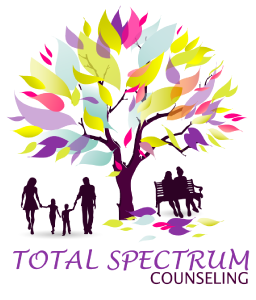
Many clients who end up in the therapeutic chair or couch are impacted by a disorganized attachment style. Disorganized attachment serves as a diathesis (risk factor) for many difficult psychological syndromes including depression, dissociative disorders, various personality disorders (especially Borderline and Narcissistic Personality Disorders), PTSD, and Complex PTSD. I have found it useful to explain the etiology and manifestation of disorganized attachment to my clients as a way to begin understanding their confusing and dysfunctional coping methods and behaviors. However, my search of the web has yielded little information for the non-clinician. As such, here is my jargon free explanation. Most of these ideas are from the research of Mary Main and her colleagues:
Usually, when infants and young children are frightened or sad they approach their parent or caregiver for safety and comfort, something called "Attachment." The attachment system is a biological imperative in most social mammals. That is, we are hard wired to seek security of other mammals in times of great distress (and to provide comfort to distressed others), and this hard wiring is as important to our survival as is eating and drinking - perhaps more so. In the first half of the 20th century, Harry Harlow and colleagues did a series of studies on Rhesus monkeys and found that the need for contact with a comforting figure took precedence over food. This is why we cling on to abusive partners and parents. Our need for "contact comfort" is deeper than the need for physical safety.
When a parent or caregiver is able to empathize, soothe, and care for their children, it teaches the children how to handle their own uncomfortable emotions and be caring and empathetic toward others. They also learn healthy boundaries and know how to seek out and rely on others for help. This is the basis of healthy interpersonal relationships and is called “secure attachment.”
However, when parents react to their children’s efforts to receive comfort, empathy, and security in a frightening way, it can adversely affect their children’s ability to cope with emotions and engage in healthy relationships. Sometimes, parents do not even mean to be frightening. Often, parents can be frightening when they are abusive. However, parents can also be frightening if they have unresolved traumas of their own, are excessively anxious and reactive, or have some other psychological difficulty that results in frightening behavior, or acting afraid of the child.
When the people who are supposed be a source of safety and security are also the source of danger and insecurity, it results in “fright without solution.” As a result, two things may happen: 1) Children in these situations tend to disconnect from reality – they dissociate. They may lose track of time, have out of body experiences, see reality as distorted, feel like events happen to someone else, or have strange and incomplete amnesia episodes. 2) They grow up coping in a confusing way – basically, they are programmed to both approach and avoid caregivers at the same time. As a result, when these children grow up, they experience intimacy as scary. When people try to be kind to them, they may freak out. They may really want to get close to someone, but are also scared at the same time and unable to open up or share.
I once had a client who described being frightened at a party. She ran away and hid in the coat closet. While there she was wishing so badly that her boyfriend would come and get her. But at the same time, she was afraid to be found. She wanted to be close to and far away from her boyfriend at the same time. Another client had a mother with disorganized attachment. She was not able to be close to her children without being mean and critical. She would hug, and cuddle them, telling them how much she cared and loved them, but at the same time would critical, rejecting, and cruel. It is because even with her children, she wanted to be close and far away at the same time.
When people who have disorganized attachment experience psychological trauma, they very frequently experience PTSD. But their PTSD is much more complicated and difficult to treat because when a securely attached person has PTSD, they can quickly trust their therapist and allow themselves to be cared for. When someone with disorganized attachment gets PTSD, it is difficult to treat because the process of learning to trust a therapist is frightening. They want to rely on a therapist and run away from the therapist at the same time. When the therapist tries to care and empathize, or the person feels themselves beginning to trust, that is the moment they start to get scared and want to run away or end treatment. Sometimes this dynamic is expressed in a manner that sabotages treatment, such as frequent no shows, provocative behavior, or a flight back into pathology or substance use. As a result, it often requires the therapist to work intensely on the therapeutic relationship for a long time before directly working with symptoms or other syndromes.
This manifests in the sexual arena as well. The person with disorganized attachment may crave closeness and distance at the time, so they engage in sexual behaviors that have both of these needs met. They may sleep with many partners to avoid deeper intimacy and connection. Or they may create distance between themselves and sexual partners during sex. Or they might find safety in the disconnected autonomy of cyber sex or pornography.
Working with people who have disorganized attachment can be difficult. Often, informing them about the reasons for their seemingly strange behaviors is an important first step.
